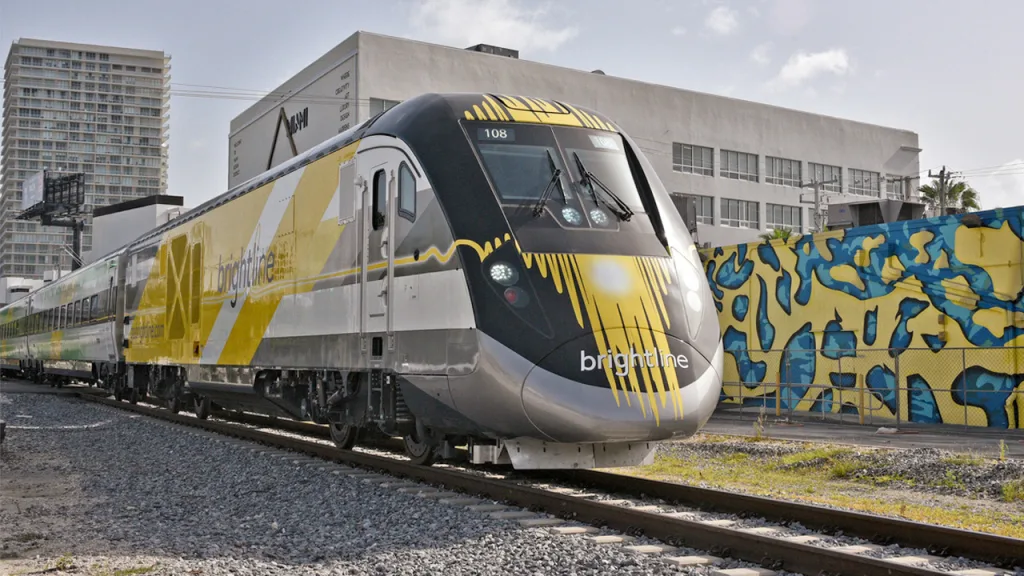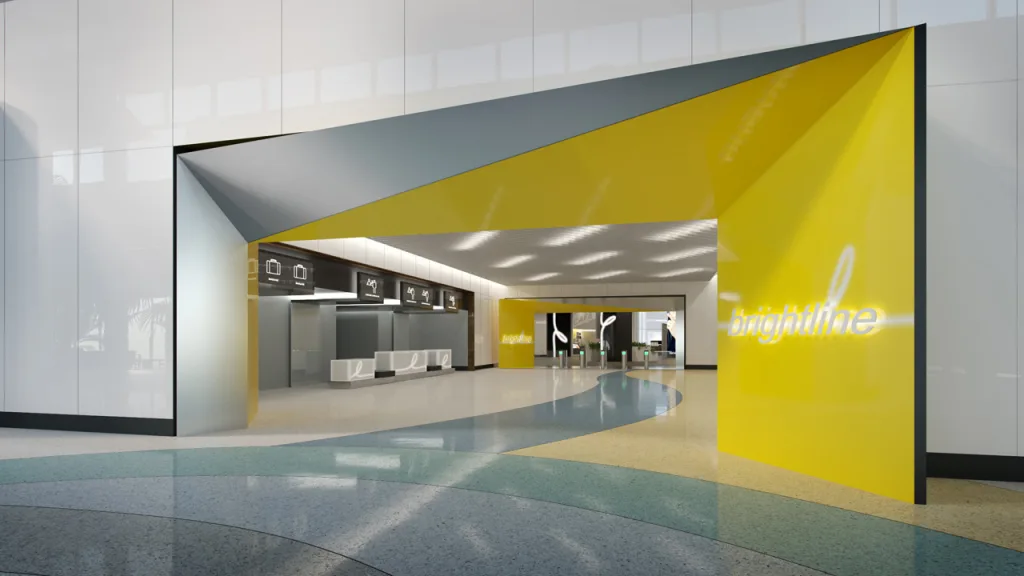Every weekday, Mike Kovensky of Delray Beach, Florida, wakes up at 4:30 a.m. and drives 50 miles to Miami, where he runs sales and marketing for the InterContinental Hotel. “So what I do is I come to the hotel, work out, shower, and get ready here,” Kovensky says. “Because if I do that all at home, then I’m stuck in the middle of the morning rush and it would take me two hours to get there.”
South Florida is dominated by cars: I-95 runs through Palm Beach, Fort Lauderdale, and Miami, and closely intersects with the main passage out of Orlando to the north. In 2016, the region’s traffic was ranked fifth worst in the nation, with a congestion rate of 8.7%, which means drivers spend an average of 8.7% of their time sitting in gridlock (Los Angeles, the most congested city in both the U.S. and the entire world, scores at 12.7%). New development in the region is only exacerbating the issue.

What will effectively change the culture, he added, would be good, high-quality train service. That was three years ago, and this spring South Floridians are finally getting their wish: Brightline, the new high-speed regional commuter rail, began service between West Palm Beach, Fort Lauderdale, and downtown Miami on May 12. Since January, the train has been running between West Palm Beach and Fort Lauderdale, but will now extend into MiamiCentral, a new transit hub and development in Downtown Miami. Eventually, Brightline will extend as far north as Orlando, and reach around 6 million residents along a 235-mile corridor. Once fully up and running, Brightline estimates it will help remove 3 million private vehicles from local roads.
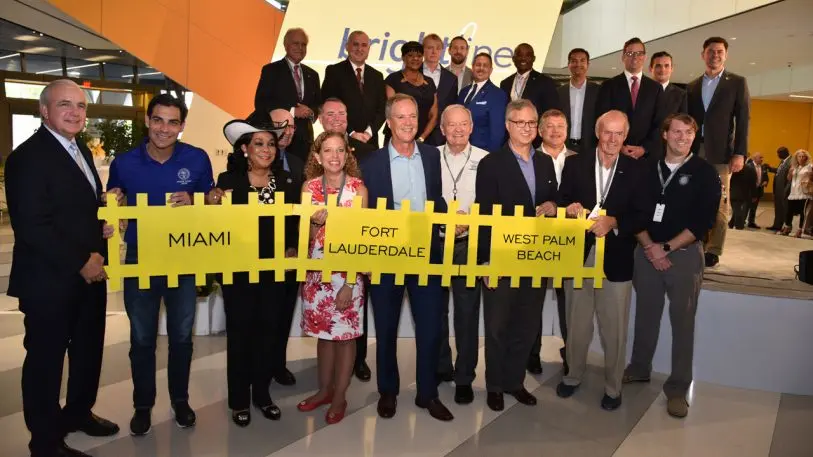
It’s certainly a necessary upgrade for the South Florida transit scene, but also quite unique in a national context: Brightline is entirely privately funded. Unlike the vast, public regional rail networks that extend through the northeast, for instance, Brightline was conceived of and funded exclusively by All Aboard Florida, a subsidiary of Florida East Coast Industries, the state’s oldest and largest commercial real estate and transportation company. FECI was acquired by Fortress Investment Group, a N.Y.C.-based private equity firm, for $3.5 billion in 2007.
Brightline is the first private rail service to take root and operate in the U.S. in over a century. All told, the project will cost over $3 billion. While All Aboard Florida, under the shell of FECI and Fortress (which, last year, was acquired by the Japanese telecoms company SoftBank) invested around $2 billion to get phase one up and running, they expect to continue to finance the project by selling private bonds to developers. Annually, the company expects to draw in $300 million in ticket sales.
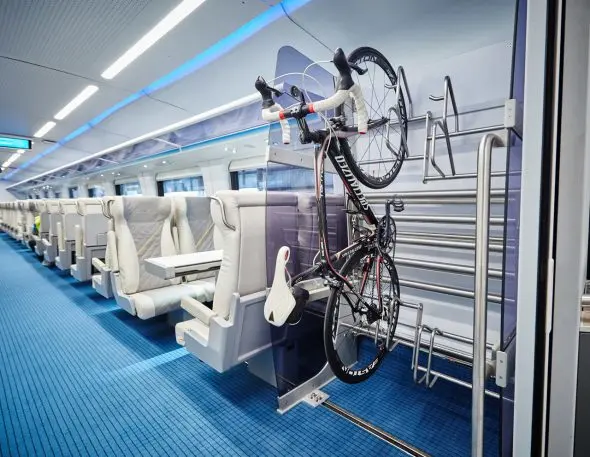
For commuters like Kovensky, the project is a relief. “I grew up in New York, and I miss the mass transit,” he says. He hates sitting in traffic, and would rather sacrifice sleep than subject himself to the gridlock. Brightline, he says, will help him keep a less nocturnal schedule. It will still take him around 45 minutes to reach Downtown Miami, but he’ll be able to wake up at 6:30 a.m. and get ready at home before heading out. When completed, the trip between Orlando and Miami should take around three hours; the drive could take as much as five in rush hour.
But All Aboard Florida has spared no expense trying to make the Brightline as attractive as possible. There’s free Wi-Fi aboard, and customers can order cocktails for their journeys. “It’s meant to be a destination,” says Bob Swindell, CEO of the Greater Fort Lauderdale Alliance. But luxury services like this put up obvious barriers to lower-income people. A one-way ticket on Brightline between Miami and West Palm Beach will cost around $15. Tri-Rail costs between $2.50 and $7 for a one way, and gas for that drive would cost over $8. It would be encouraging to see the company offer discount passes to people at a socioeconomic disadvantage, but there are currently no plans in the works to do so.
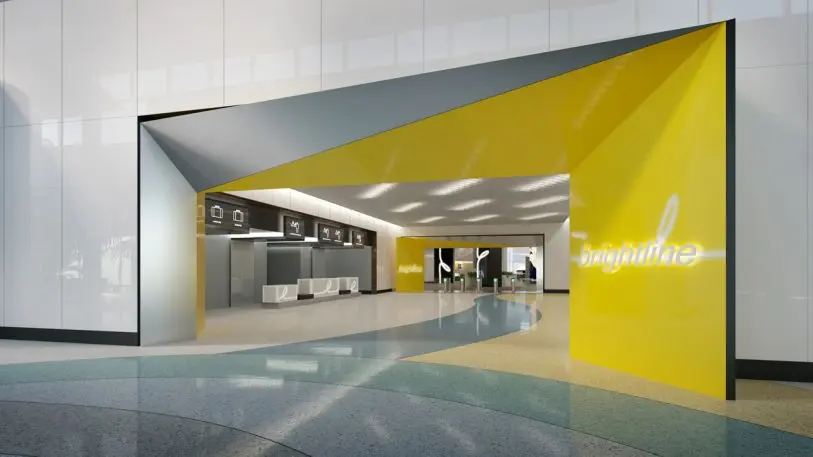
However, the addition of this transit network, while privately funded, is adding a public benefit to the region. Despite an enormous need to reduce car usership in South Florida to curb the impending threats of climate change, Florida is not exactly progressive on funding mass transit projects. Out of the state’s $10.8 billion transportation budget for this fiscal year, just $618 million went toward mass transit projects–a fraction of what it cost to get the Brightline up and running. The state’s low taxes make raising revenue for public projects notoriously difficult, and the conservative government does not exactly track with the needs of the more urban centers of South Florida. “When you’re in Miami, you see a real desire for transit-oriented and pedestrian development,” says Nitin Motwani, a local real estate developer. “The vast majority of Florida is not like that. If you go up to Tallahassee and start talking about investing billions of dollars in dense, transit-focused environments, that’s not just where their priority is.”
At one point, the state proposed a high-speed rail corridor between Tampa and Orlando, and eventually extending through South Florida. It never received funding. So the Brightline instead dug back into Florida’s roots and repurposed the freight rail tracks that Henry Flagler, founder of Florida East Coast Industries, privately built a century ago.
The new high-speed rail service–which tops out at 110 miles per hour–will provide much-needed connectivity through the region and now, “people are talking about transit in ways they never have, how to link everything to Miami,” Motwani says.
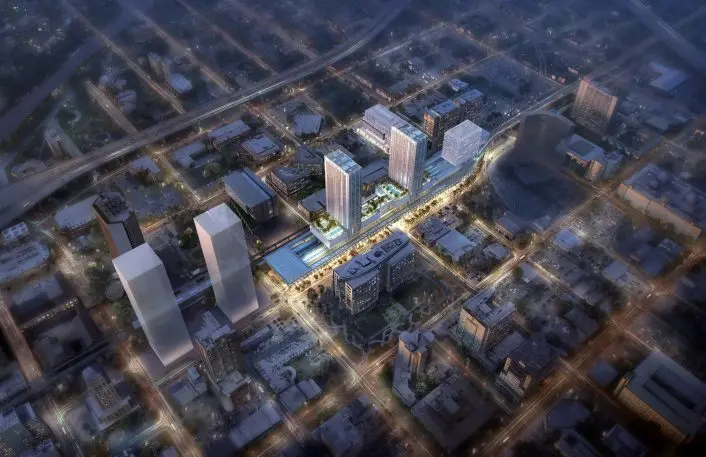
Motwani’s current 27-acre project, Miami Worldcenter, will soon open right next to the Miami stop on Brightline. The development will comprise retail and residential properties, and Motwani sees potential for building more housing and commerce by the train line to drive down dependence on cars and boost mobility through the counties. Worldcenter, however, is not without controversy: The development is the harbinger of gentrification for the historically black neighborhood of Overtown, whose residents are justifiably concerned about its effects on their community. Residents have called for jobs completing the center to go to locals at livable wages, and for revenues from the development to go toward much-needed upgrades to infrastructure like water mains and sewer lines (Worldcenter so far has committed to $100 million in infrastructure upgrades and created 4,000 jobs, 75% of which have gone to Miami-Dade residents). Because Brightline will intersect with communities along the socioeconomic spectrum, it will be important for the train company to ensure it is financially accessible to all.
That should not be too much to ask: All Aboard Florida is confident that the train will be able to quickly recuperate its up-front investment by capitalizing on the state’s tourism numbers–68 million people visit Orlando each year, and more than 15 million come to Miami–while also pulling in revenues from the approximately 4 million square feet of development that will spring up around the stations.
Private investment in mass transit projects is something that’s been ramping up over the past few years–we see Elon Musk attempting to build a tunnel under the 405 in Los Angeles to transport cars, bikes, and pedestrians, and the startup Transit X is angling to replace cars and subways with networks of solar-powered, elevated pods. In a way, it’s refreshing to see private money funding a mass transit project that’s essentially still just a train, albeit a fancy one. If Brightline works (and if it figures out a way to equitably serve low-income passengers), it could serve as a model for other localities to overcome state-level recalcitrance and get mass transit networks up and running.
It’s certainly creating a bit of a culture shift in South Florida already. “Nearly every conversation you have with people has to do with traffic and the lack of transit and the desire for more,” Motwani says. “Now, it feels like at least 50% of conversations you’re having with people have to do with this train.”
Recognize your brand’s excellence by applying to this year’s Brands That Matter Awards before the early-rate deadline, May 3.

